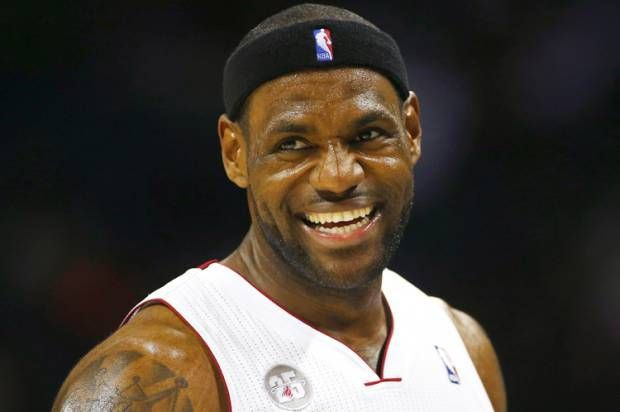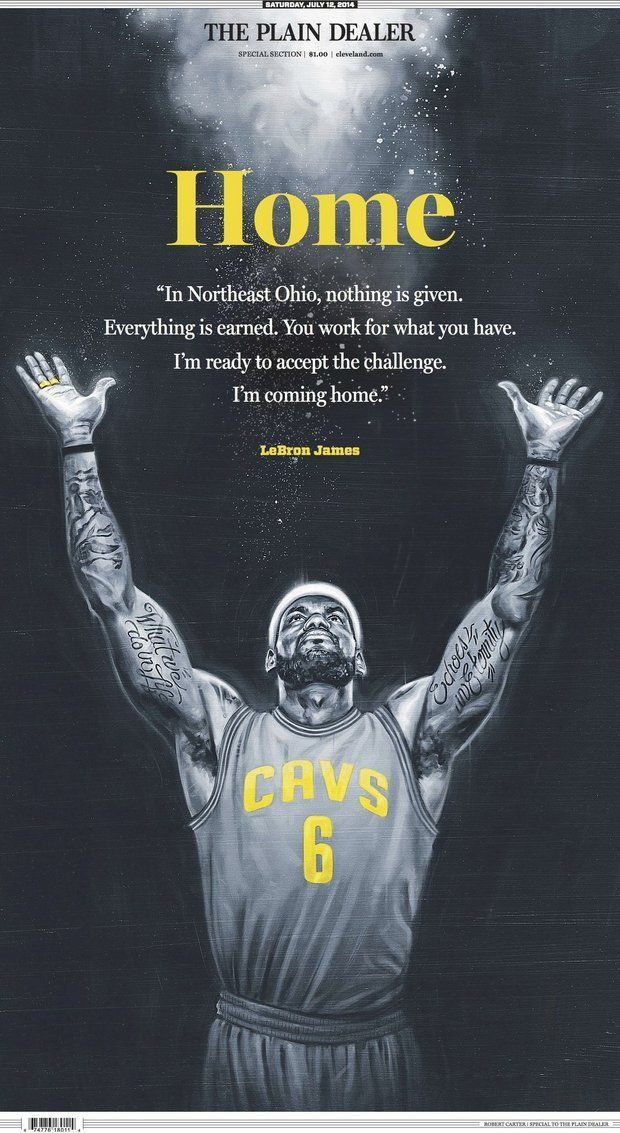LeBron James Returns To Cleveland Cavaliers When City Is Already Optimistic, Downtown Booming

Even before King James announced his return to Cleveland on Friday, residents were already optimistic about their city’s prospects.
Despite the sky-high foreclosure rates and sluggish job growth that have plagued the Rust Belt city, Clevelanders say they see signs of economic renaissance. Billions of dollars are being plowed into new hotels, a casino, a convention center and a riverside promenade in the revitalized downtown district. Tourism is up, with 16.2 million out-of-towners having swung through the city last year and more expected for 2014. Ohio City, once a struggling neighborhood, is now home to the city’s growing beer brewing industry.
And earlier this week, the Republican National Committee picked the city to host its 2016 convention, an affirmation of the city’s progress since the crippling 2008 global financial downturn.
“It’s a symbolic part of everything else going on in the community,” Joe Roman, CEO of the Greater Cleveland Partnership, a private sector economic development group, said about LeBron James’ decision to rejoin the Cleveland Cavaliers after four years playing for the Miami Heat.
“People looking at Cleveland, especially over the last several years, see a transitioning city, a transitioning economy and, let’s face it, sports can be an icon for that,” Roman said. James’ return “can add measurable benefits” to Cleveland.
Much of that benefit will likely come in the form of rising hotel and restaurant reservations and increased business at bars around the Quicken Loans Arena -- known as “The Q” -- which will host the Cavaliers’ 41 home games starting in October.
The Q arena and Cavs basketball team helped generate about $136 million in direct spending in Cuyahoga County last year, according to figures provided by Positively Cleveland, the convention and visitor bureau for the Greater Cleveland area. Those numbers are sure to climb with James back in the lineup, said spokesman Scott Peacock. “It will definitely have an impact” on both attendance at games and dollars spent in the area.
John Granzier, who owns the Clevelander Bar & Grill a block-and-a-half away from the Q, said the difference to his business will be “night and day.” He said the sports bar had recently renovated its interior and an outdoor patio. Now he plans to fix up the place even more. “In a way, this is something to celebrate like a championship,” he said. “It should be a heck of a night [at the bar] tonight.”
At the CLE Clothing Co. shop downtown, Laura Kubinski said she was busy nonstop on Friday afternoon, working the cash register and filling orders online. The company, which sells Cavs-branded merchandise, had already designed a wine-and-gold T-shirt saying “Return of the King” -- but hadn’t printed it, afraid to jinx the MVP’s decision. Kubinski said she expected to sell “hundreds” of Cavs T-shirts by the time she went home on Friday.
“The return -- it’s like a redemption. Everybody is excited about everything,” she said. “‘Electric’ is a great word to describe the city right now.”
Outside the store, she said, people blasted their car horns and ran down East Fourth Street after James announced he was "coming home." Fans flooded into bars, and grown men wept on radio sports shows. A spokeswoman for Cleveland’s Mayor Frank Jackson said in an email, “He does say ‘Welcome back!’ to LeBron James.”
At the YMCA of Greater Cleveland, organizers are expecting an uptick in interest in youth basketball programs, said Rick Haase, the organization’s vice president of marketing. But he added that the YMCA already had plans to open a new downtown facility in 2015 to meet the needs of Cleveland’s growing urban core, where apartments and condominiums are at a 95 percent occupancy rate and property developers are scrambling to keep up with demand.
“There’s a newly emerging business district in our city, and the excitement could not be more palpable about that,” Haase said. “It’s a really great time for the city.”
Cleveland continues to grapple with economic challenges related to the pop of the housing bubble in 2008 and the shuttering of factories and businesses in the wake of the recession. Unemployment remains around 6.6 percent in the Cleveland-Elyria-Mentor metropolitan area, about on par with the national average, and last fall, Greater Cleveland lost more jobs than any other metro area in the country, according to the U.S. Labor Department.
For many Clevelanders, the most important part of James’ return could be the message it sends about the city’s future.
“I think that belief in the city and the region will be regenerated as a result of his choosing to come back,” said Joe Maranucci, CEO of the Downtown Cleveland Alliance, a nonprofit that promotes downtown development. “He could’ve gone anywhere to play basketball in the country, but he chose to come home. I think that feeling of pride -- that one of our sons is coming back -- is going to be important for Clevelanders.”

© Copyright IBTimes 2024. All rights reserved.



















